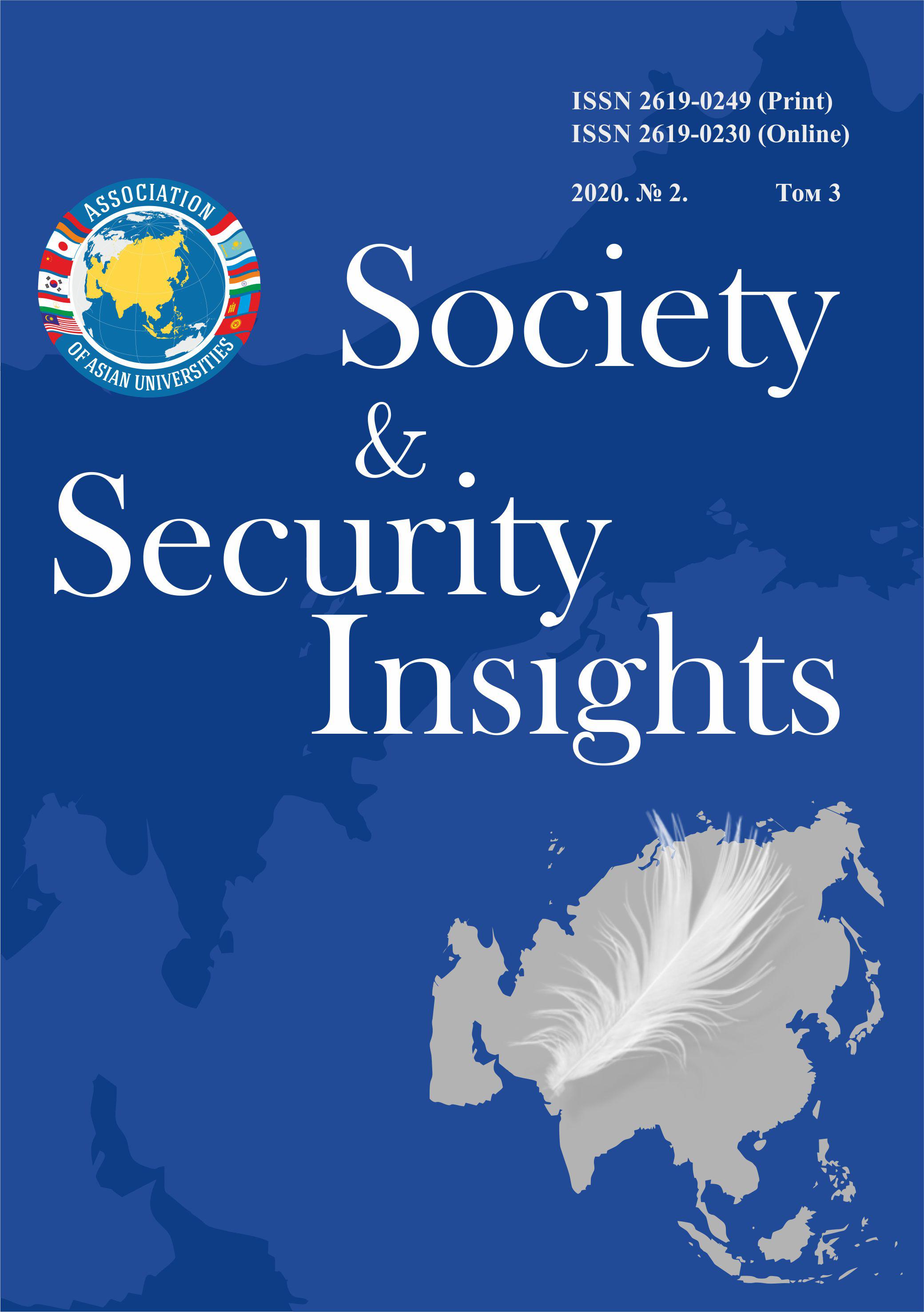PROTEST MOODS OF THE REGION'S RESIDENTS AS A MANIFESTATION OF DESTRUCTIVE FORMS OF CIVIC ACTIVITY
Main Article Content
Abstract
The article analyzes the protest moods of residents of the Vologda region in the context of the development of civil activity of the population. The main trends of protest potential in various socio-demographic categories are considered, and the most significant factors affecting the formation of protest socio-political moods of the population of the region are determined. The research is based on the results of regular monitoring of public opinion conducted by the Center of the Russian Academy of Sciences in the Vologda region. It is concluded that in the period from 2008 to 2019 the protest potential of residents of the Vologda region remains at a relatively stable level. The highest indicators of potential protest activity are the categories of the population that negatively characterize the socio-economic and political situation in the country and region, are dissatisfied with their own financial situation, do not approve of the activities of government structures, and experience negative emotions. Particular attention is drawn to the significant share of potential participants in protest actions among those who demonstrate low indicators of civil participation. Protest moods do not contribute to the development of conventional activity of citizens, prevent the consolidation and solidarity of the population. In this context, the protest potential acts as a destructive form of civil activity of the population.
Downloads
Metrics
Article Details

This work is licensed under a Creative Commons Attribution 4.0 International License.
Authors retain the copyright of their manuscripts, and all Open Access articles are distributed under the terms of the Creative Commons Attribution License, which permits unrestricted use, distribution, and reproduction in any medium, provided that the original work is properly cited.
References
Букаев А.Н. Гражданское общество и протестные настроения. Известия Академии управления: теория, стратегии, инновации, 2012, 5(12), 3–6.
Глотов В., Бахтизин А., Волкова М. Социальная напряженность в субъектах Российской Федерации. Федерализм, 2019, No. 4, 142–161. DOI: 10.21686/10.21686/2073-1051-2019-4-142-160
Гулин К.А., Дементьева И.Н. Основные тенденции протестных настроений жителей Вологодской области. Социологические исследования, 2008, No. 11, 64–71.
Дементьева И.Н. Гражданская активность населения в контексте формирования социального капитала региона. Социальное пространство, 2017, 5(12). URL: http://socialarea-journal.ru/article/2439
Дементьева И.Н. Протестный потенциал в регионе в контексте проблемы национальной безопасности. Проблемы развития территории, 2015, 3(77), 115–126.
Кинсбурский А. В., Топалов М. Н. Социальная напряжённость и массовые акции протеста. Социологическая наука и социальная практика, 2016, 1(13), 20–34.
Кинсбурский А.В. Социальное недовольство и потенциал протеста (по данным социологических опросов). Социологические исследования, 1998, No. 10, 32-38.
Миронова С.В. Протест – форма реализации гражданской активности. Вестник НИЦ МИСИ: актуальные вопросы современной науки, 2018, No. 15, 64-69.
Протестный потенциал. URL: https://www.levada.ru/tag/protesty/ (дата обращения: 20.04.2020)
Российский статистический ежегодник. 2019: Стат.сб. Росстат. М., 2019.
Семенов В.С. Россия в сети конфликтности: между взрывом и согласием. Социологические исследования, 1993, No. 7, 73–76.
Соколов А.В., Курбанова А.А. Массовые движения в современной России (на примере движения в поддержку А. Навального. Вестник Томского государственного университета Философия. Социология. Политология, 2019, No. 52, 231–246.
REFERENCES
Baranova, G.V., Frolov, V.A. (2012). Metodologiya i metodika izmereniya sotsial'noy napryazhonnosti [Methodology and methods of measurement of social tension]. Sociological studies, no. 3, 50-65.
Bukayev, A.N. (2012). Grazhdanskoye obshchestvo i protestnyye nastroyeniya [Civil society and protest moods]. Izvestiya Akademii upravleniya: teoriya, strategii, innovatsii, 2012, 5(12), 3-6.
Glotov V., Bakhtizin A., Volkova M. (2019). Social tension in Russian regions. analysis of causes and consequences. Federalism, no. 4, 142–161. DOI: 10.21686/10.21686/2073-1051-2019-4-142-160
Gulin, K.A., Dement'yeva, I.N. (2008). Osnovnyye tendentsii protestnykh nastroyeniy zhiteley Vologodskoy oblasti [Main tendencies of protest moods of the Vologda region residents]. Sociological studies, no. 11, 64–71.
Dement'yeva, I.N. (2017). Civic Engagement of the Population in the Context of Formation of Social Capital in the Region. Social area, no. 5 (12). URL: http://socialarea-journal.ru/article/2439
Dement'yeva, I.N. (2015). Protest potential in the region in the context of national security. Problems of territory’s development, 3(77), 115–126.
Kinsburskiy, A.V., Topalov, M.N. (2016). Sotsial'naya napryazhonnost' i massovyye aktsii protesta [Social tension and mass protest campaigns (on the issue of the action mechanism)]. Sotsiologicheskaya nauka i sotsial'naya praktika, 1(13), 20–34.
Kinsburskiy, A.V. (1998). Sotsial'noye nedovol'stvo i potentsial protesta (po dannym sotsiologicheskikh oprosov) [Social discontent and protest potential]. Sociological studies, no. 10, 32–38.
Mironova, S.V. (2018). Protest – forma realizatsii grazhdanskoy aktivnosti [Protest as a form of civil acvivity]. Vestnik NITS MISI: aktual'nyye voprosy sovremennoy nauki, no. 15, 64–69.
Protestnyy potentsial [Protest potential]. URL: https://www.levada.ru/tag/protesty/
Rossiyskiy statisticheskiy yezhegodnik [Russian statistical yearbook] (2019). Moscow: Rosstat.
Semenov, V.S. (1993). Rossiya v seti konfliktnosti: mezhdu vzryvom i soglasiyem [Russia in the web of conflict: between challenge and unity]. Sociological studies, no. 7, 73–76.
Sokolov, A.V., Kurbanova, A.A. (2019). Mass movements in modern Russia (on the example of the movement in support of Alexei Navalny). Tomsk State University Journal of Philosophy, Sociology and Political Science, no. 52, 231–246.

